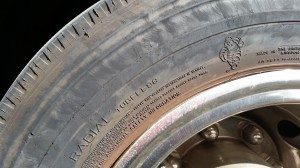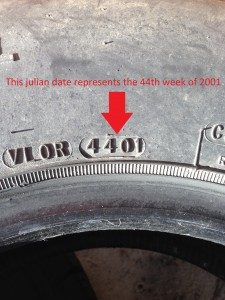
Visually check your tires for signs of aging or wear before and after every trip. It is important to check the date stamped on the tires. Generally speaking, tires are recommended to be replaced every five years. This number can change depending on the manufacturer of the tire. Dry rot is a term used to describe tiny cracks along the sidewall of a tire, if dry rot is present it is recommended to replace the tires regardless of age. To protect your tires from these common damage conditions simply follow the guidelines listed below.
- Keep your tires properly inflated
- Keep your tires clean
- Avoid prolonged exposure to heat, cold, or moisture
- Avoid prolonged exposure to ultraviolet rays
- Cover your tires when your vehicle is not in use
- Do not park near electric generators or transformers
- Do not store your vehicle in an area where welding is being done or in a garage that has mercury vapor lamps.
Unless you’re living in your RV full time, your unit probably spends some time sitting during the off-season. What you may have not known is that rubber tires age when they are not being used. The best place to store an RV is in a sealed garage with climate control. Not everyone has the ability to store their RV indoors, and following the guidelines listed below will help get the most out of your tires while the unit is stored outdoors.
- Thoroughly clean tires with soap and water before placing into storage.
- Cover tires to block direct sunlight and ultraviolet rays.
- Put down cardboard, plastic, or plywood between the tires and the ground they are stored on. Keeping tires from directly sitting on the grass, dirt, or pavement will extend the lifespan of the tire.



